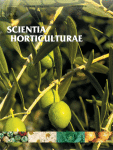Ver ítem
- xmlui.general.dspace_homeCentros e Institutos de InvestigaciónCIRN. Centro de Investigaciones de Recursos NaturalesInstituto de FloriculturaArtículos científicosxmlui.ArtifactBrowser.ItemViewer.trail
- Inicio
- Centros e Institutos de Investigación
- CIRN. Centro de Investigaciones de Recursos Naturales
- Instituto de Floricultura
- Artículos científicos
- Ver ítem
A protocol for the in vitro propagation and polyploidization of an interspecific hybrid of Glandularia (G. peruviana × G. scrobiculata)
Resumen
The genus Glandularia (Verbenaceae) has more than 50 species and it holds great ornamental potential due to its colorful flowers, long flowering period and low water requirements. Since the floriculture market avidly seeks novelties, increasing the diversity within the genus would increase its commercial value. Some of the traits that should be improved in these species are their architecture and the size and colors of the flowers and leaves. In this
[ver mas...]
The genus Glandularia (Verbenaceae) has more than 50 species and it holds great ornamental potential due to its colorful flowers, long flowering period and low water requirements. Since the floriculture market avidly seeks novelties, increasing the diversity within the genus would increase its commercial value. Some of the traits that should be improved in these species are their architecture and the size and colors of the flowers and leaves. In this sense, obtaining polyploid individuals is an interesting strategy to achieve this objective. In this paper a hybrid of Glandularia peruviana × Glandularia scrobiculata was cultured under in vitro conditions. Different plant growth regulators and their combinations were tested to obtain appropriate multiplication rates. The best results were obtained with the combination of 6.6 μM thidiazuron/0.03 μM α-naphthalenacetic acid, with a multiplication rate of 19 shoots per explant. The plantlets were first rooted and then acclimatized by transferal to an 8.0 cm diameter pot containing Growing mix®, and maintenance inside a humidity chamber. For poliploydization, the explants were exposed to colchicine in concentrations of 0.001% and 0.01% for 24 and 48 h. The 40 recovered plants were characterized according to their DNA content. There were 21 diploids, 14 solid tetraploids, 1 solid octoploid, 3 chimera tetraploids and 1 chimera octoploid. Phenotypically, the size of the flowers, inflorescences, pollen grains and stomata were significantly larger in polyploid individuals. Surprisingly, stem diameter, leaf size and color intensity of the leaves and flowers were not significantly different between diploid and tetraploid individuals. Due to the size of the inflorescences, the tetraploid individuals are a promising starting material for a Glandularia breeding program.
[Cerrar]

Autor
Gonzalez Roca, Lucia;
Iannicelli, Jesica;
Coviella, Maria Andrea;
Bugallo, Veronica Lucia;
Bologna, Paula;
Pitta Alvarez, Sandra Irene;
Escandon, Alejandro Salvio;
Fuente
Scientia Horticulturae 184 : 46-54 (March 2015)
Fecha
2015-03-05
ISSN
0304-4238
Formato
pdf
Tipo de documento
artículo
Palabras Claves
Derechos de acceso
Restringido
 Excepto donde se diga explicitamente, este item se publica bajo la siguiente descripción: Creative Commons Attribution-NonCommercial-ShareAlike 2.5 Unported (CC BY-NC-SA 2.5)
Excepto donde se diga explicitamente, este item se publica bajo la siguiente descripción: Creative Commons Attribution-NonCommercial-ShareAlike 2.5 Unported (CC BY-NC-SA 2.5)

